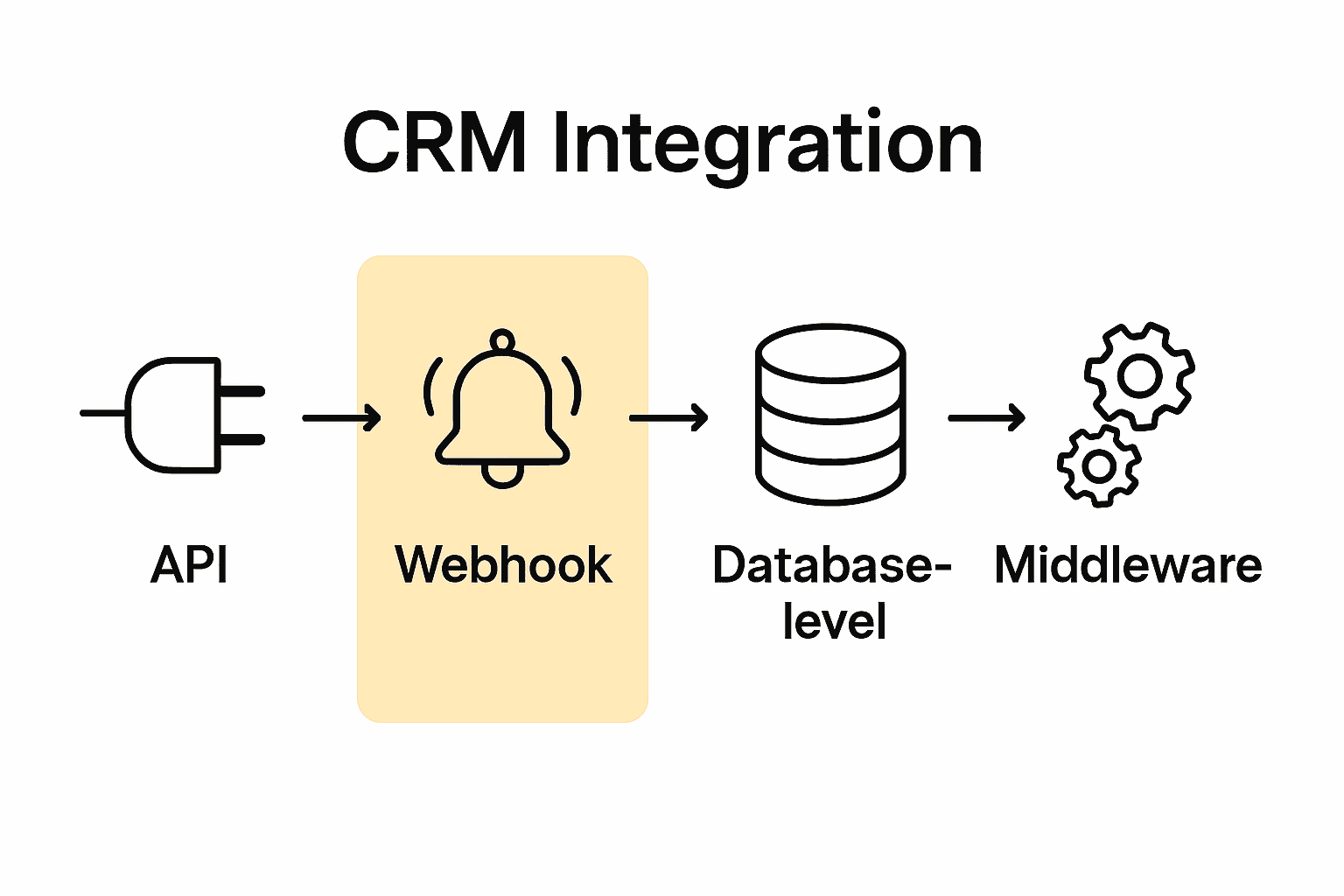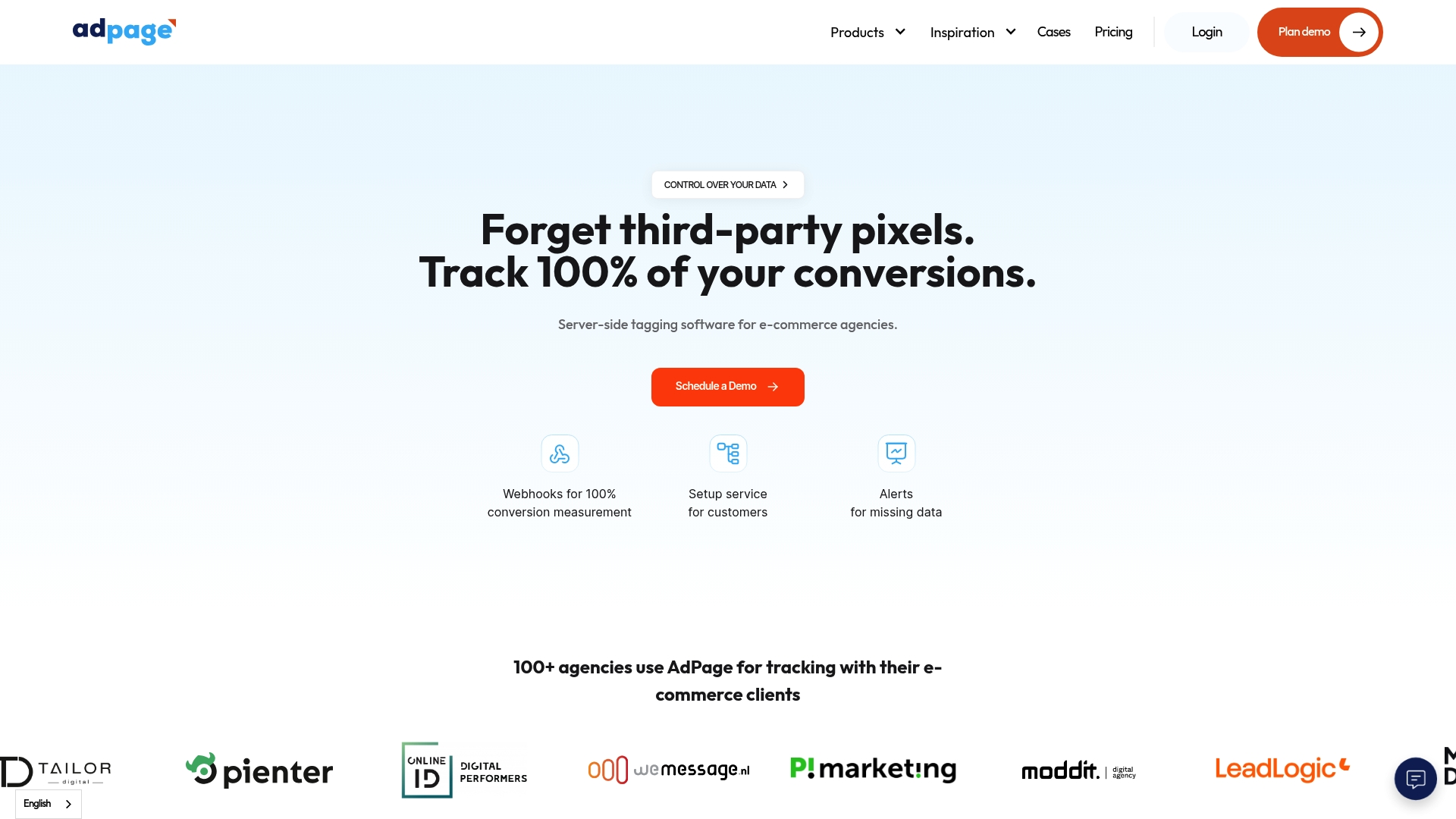Did you know that businesses using integrated CRM systems experience up to a 29 percent increase in sales? Seamlessly connecting customer management tools with digital platforms is not just a tech upgrade, it is a smart move that helps companies better understand and serve their customers. With every interaction captured and analyzed in real time, organizations gain the power to deliver more personal experiences and build lasting customer loyalty.
Key Takeaways
| Point | Details |
|---|---|
| Holistic Customer Understanding | CRM integration centralizes customer data, enabling personalized marketing and improved customer interactions. |
| Flexible Integration Strategies | Various CRM integration types, such as API and webhook, cater to different business needs and operational complexities. |
| Security and Compliance Importance | Effective CRM integration demands robust security measures and adherence to compliance standards to protect sensitive data. |
| Tackling Integration Challenges | Addressing technical hurdles, such as data silos and version changes, is essential for successful CRM implementation and user adoption. |
Table of Contents
- Defining Crm Integration And Core Concepts
- Types Of Crm Integration For E-Commerce
- Key Features And Integration Mechanisms
- Technical Steps For Seamless Implementation
- Compliance, Data Privacy, And Security Risks
- Common Challenges And Solutions In Crm Integration
Defining CRM Integration and Core Concepts
Customer Relationship Management (CRM) integration represents a sophisticated strategy where businesses connect their customer management systems directly into digital sales platforms. CRM integration transforms raw customer interaction data into actionable insights that drive meaningful business outcomes.
According to research published in an academic sustainability journal, CRM integration combines multiple critical elements:
- Management information systems
- Employee knowledge repositories
- Customer behavior datasets
The primary goal of CRM integration is to create a holistic understanding of customer interactions across multiple touchpoints. By centralising customer data, organisations can develop more personalised experiences and targeted marketing strategies. Read more about conversion tracking techniques, which complement CRM integration efforts.
A peer-reviewed study projected that integrated CRM systems will significantly enhance customer loyalty and retention outcomes by 2025. The research indicates that sophisticated integration strategies enable businesses to:
- Predict customer preferences
- Streamline communication channels
- Develop proactive engagement models
Ultimately, successful CRM integration is not just about collecting data, but transforming that data into meaningful customer relationships that drive sustainable business growth.
Types of CRM Integration for E-Commerce
E-commerce businesses can leverage different CRM integration strategies to optimize their customer relationship management and data utilization. Understanding these integration types helps organizations select the most appropriate approach for their specific operational needs and technological infrastructure.
Key CRM Integration Categories
API-based Integration represents the most flexible approach, allowing direct communication between e-commerce platforms and CRM systems. This method enables:
- Real-time data synchronization
- Seamless information exchange
- Custom configuration options
Webhook Integration provides another robust mechanism for connecting systems. This approach triggers specific actions when predefined events occur, such as customer purchases or profile updates. Learn more about advanced e-commerce automation techniques that complement webhook strategies.
Advanced Integration Approaches
Here’s a comparison of the main types of CRM integration for e-commerce:
| Integration Type | Key Characteristics | Typical Use Cases |
|---|---|---|
| API-based | Real-time sync Custom configuration |
Flexible platforms Modern systems |
| Webhook | Event-triggered Instant notifications |
Order updates Customer events |
| Database-level | Bulk data sync Direct database access |
Large enterprises Data-intensive setups |
| Middleware | System translation Enhanced compatibility |
Legacy integration Multi-system connections |
Database-level integration offers a more comprehensive solution for enterprises requiring complex data management. By directly connecting database systems, businesses can:
- Synchronize large volumes of customer data
- Maintain consistent information across platforms
- Reduce manual data entry errors
Middleware Integration serves as a sophisticated intermediary, enabling communication between disparate systems that might not naturally connect. These platforms act as translation layers, ensuring smooth data flow and compatibility across different technological ecosystems.
Choosing the right CRM integration type depends on factors like technical complexity, scalability requirements, and specific business objectives.
 Successful implementation demands a strategic approach that aligns technological capabilities with customer engagement goals.
Successful implementation demands a strategic approach that aligns technological capabilities with customer engagement goals.

Key Features and Integration Mechanisms
CRM integration demands sophisticated technological mechanisms that ensure seamless data exchange, security, and operational efficiency. These systems go far beyond simple data transfer, creating intelligent communication pathways between different technological platforms.
According to a professional industry article from Netguru, several critical features define effective CRM integration strategies:
- Real-time data synchronization across multiple systems
- Secure API connections
- Advanced encryption protocols
- PCI-DSS compliance standards
- Unified data management for personalized marketing
Core Integration Mechanisms
Modern CRM integration relies on multiple sophisticated mechanisms. Explore our guide on advanced data analytics methodologies to understand the technological foundations of these systems. The primary integration mechanisms include:
- Automated data mapping
- Event-triggered synchronization
- Bidirectional data flow
- Configurable transformation rules
Security and Performance Considerations
Secure data transmission remains paramount in CRM integration. Businesses must implement robust encryption, multi-factor authentication, and continuous monitoring to protect sensitive customer information. The integration framework should provide granular access controls, ensuring that only authorized personnel can view or manipulate critical data.
Ultimately, successful CRM integration transforms raw customer data into actionable insights, creating a dynamic ecosystem where technology and customer understanding converge seamlessly.
Technical Steps for Seamless Implementation
CRM integration requires a methodical approach that transforms complex technological challenges into streamlined operational processes. Understanding the precise technical implementation steps helps businesses minimize potential disruptions and maximize system effectiveness.
According to a practical integration guide projected for 2025, the implementation process involves strategic technical considerations:
Integration Method Selection
Choosing the appropriate integration approach is critical. Businesses can select from multiple implementation strategies:
- Plugin-based integration
- Middleware platforms
- Direct API connections
Detailed Implementation Workflow
The technical implementation follows a structured progression:
- Comprehensive system compatibility assessment
- Precise data field mapping between platforms
- Configuration of automated workflow triggers
- Establishing data transformation rules
Explore our insights on data analytics challenges to understand potential technical complexities during integration.
Critical Configuration Elements
Workflow automation represents a fundamental component of successful CRM integration. Key configuration elements include:
- Automated event tracking
- Abandoned cart recovery mechanisms
- Customer segmentation rules
- Real-time notification systems
Successful implementation demands rigorous testing and comprehensive team training. Organizations must conduct thorough system simulations, validate data integrity, and ensure all team members understand the new integrated environment. The goal transcends technical implementation – it’s about creating a unified, intelligent system that transforms raw data into meaningful customer insights.
Compliance, Data Privacy, and Security Risks
CRM integration introduces complex security landscapes where technological innovation meets regulatory compliance. Businesses must navigate a challenging environment of protecting sensitive customer data while maintaining seamless operational functionality.
According to a comprehensive security article from Netguru, several critical security risks demand immediate attention:
Primary Security Vulnerabilities
Data breach potential represents the most significant threat in CRM integration. Key vulnerabilities include:
- Third-party system access points
- Insufficient encryption protocols
- Inadequate access control mechanisms
- Potential API security weaknesses
Compliance Frameworks
Strict regulatory requirements mandate robust security implementations. Learn more about user data privacy strategies to comprehend the complexity of compliance. Critical compliance considerations include:
- PCI-DSS certification requirements
- GDPR data protection standards
- Customer consent management
- Transparent data handling protocols
Risk Mitigation Strategies
Successful security implementation demands a multi-layered approach. Organizations must:
- Conduct comprehensive vendor security assessments
- Implement advanced encryption technologies
- Develop granular access control systems
- Establish continuous monitoring frameworks
Ultimately, CRM integration security transcends technological solutions – it’s about building trust, protecting customer data, and maintaining the integrity of digital interactions.
Common Challenges and Solutions in CRM Integration
CRM integration presents a complex technological landscape filled with potential obstacles that can significantly impact business operations. Understanding these challenges is crucial for developing robust, adaptable digital strategies that ensure smooth data management and customer experience.
Technical Integration Hurdles
According to professional research, several critical technical challenges emerge during CRM integration:
- API rate limits restricting data exchange
- Frequent version changes in integration platforms
- Complex data consolidation requirements
- Inventory synchronization complexities
Strategic Solution Approaches
Businesses can address these challenges through multiple strategic interventions:
- Implement request batching techniques
- Develop version monitoring protocols
- Establish master data management frameworks
- Deploy robust authentication mechanisms
Explore our comprehensive guide on troubleshooting tracking system issues to understand advanced problem-solving strategies.
Comprehensive Challenge Mitigation
A 2025 business analysis highlighted additional critical integration challenges:
- Persistent data silo problems
- Duplicate customer record management
- Legacy system compatibility limitations
- User adoption resistance
Successful CRM integration requires a holistic approach that combines technological solutions with strategic change management. Organizations must invest in middleware platforms, implement rigorous data cleansing processes, and prioritize user experience during system deployment. The ultimate goal is creating a seamless, intelligent ecosystem that transforms raw data into meaningful customer insights.
Unleash the Full Power of CRM Integration for Your E-commerce Data
Feel overwhelmed by complex CRM integration? You are not alone. Many e-commerce businesses struggle with data loss, inaccurate conversion tracking, and gaps in customer insights when platforms do not synchronise properly. From server-side tagging to robust consent management, the article highlights the urgent need for reliable data transfer, complete conversion visibility, and airtight compliance. You are looking for certainty and control over your data—exactly what every ambitious online retailer needs.

Let AdPage show you the difference. Our platform empowers you to monitor 100% of your conversions with advanced server-side tagging, putting an end to data gaps and ensuring full compliance with GDPR and privacy policies. Seamless integration with Shopify, WooCommerce, Magento, and other major platforms means you can finally trust your data and unlock smarter marketing decisions. Do not let your growth stall—visit AdPage’s main site and discover how you can maximise every customer interaction today.
Frequently Asked Questions
What is CRM integration in e-commerce?
CRM integration in e-commerce refers to the process of connecting customer relationship management systems directly with digital sales platforms to enhance customer data management and optimize marketing strategies.
What are the main types of CRM integration?
The main types of CRM integration for e-commerce include API-based integration, webhook integration, database-level integration, and middleware integration, each serving distinct operational needs and technical requirements.
How can businesses benefit from CRM integration?
Businesses can benefit from CRM integration by gaining a holistic understanding of customer interactions, predicting customer preferences, streamlining communication, and ultimately enhancing customer loyalty and retention.
What are common challenges faced during CRM integration?
Common challenges during CRM integration include API rate limits, data consolidation complexities, inventory synchronization issues, and resistance to user adoption. Addressing these challenges requires strategic planning and holistic solutions.



.png)
